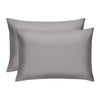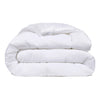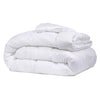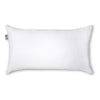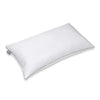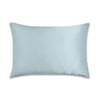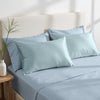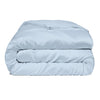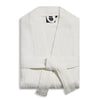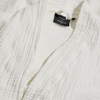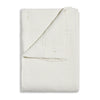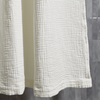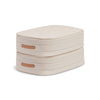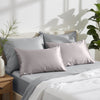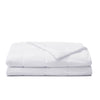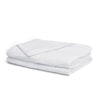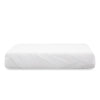The Daily Miracle
Quilt vs. Blanket: What’s the Difference?
Published
November 01, 2022
Author
Suze Dowling

One of the most common and frustrating problems many people face when it comes to getting a good night’s sleep is staying at the right temperature throughout the night. There’s nothing more frustrating than waking up in the middle of the night, shivering or covered in sweat because something’s changed about your temperature and totally thrown off your restful night’s sleep.
While we can offer you many different tips on how to stay cool at night, there’s one thing we think is worth clearing up first — and that’s the difference in the types of covers you may be using on your bed. It may seem like there’s no meaningful difference between quilts, blankets, comforters, or other cover-based terminology, but as it turns out, there really is.
Knowing what these different pieces of bedding can offer you and to what extent each can affect your sleeping temperature and patterns can make a huge difference in the quality of your sleep. So let’s talk about the differences between quilts and blankets, so you can make an informed decision about your bedding choices.
What Is a Quilt?
You can probably identify a quilt visually, but do you know what makes a quilt a quilt?
It’s a type of bed covering that’s generally made from three layers of fabric sewed together. The outside layers are typically made from colorful, soft fabrics — think of a handmade quilt made by a grandparent. Today, some people even sew quilts out of memorable t-shirts — in a geometric pattern.
The details of the pattern can vary. In general, quilts have a long history of being used to commemorate important events or even to tell stories in many cultures.
The middle layer of a quilt is usually made of padding, like batting, to help the quilt retain more warmth when used. The actual process by which the layers of a quilt are attached to one another is called quilting.
What Is a Blanket?
“Blanket” is often used as a catch-all term for anything you put over yourself while you sleep or when you’re feeling cold. But technically, it refers to a specific kind of covering: one that’s made from a single layer of fabric.
This single layer can comprise a wide range of materials and techniques, and because they’re made from a single layer, blankets generally have the same pattern on either side.
So if you have a bed covering you’ve been referring to as a blanket, but it’s actually made from a couple of different pieces of fabric sewn together around the edges… it’s not a blanket at all, but a quilt, comforter, duvet, or even potentially a coverlet.
We’re not likely to win the battle on using “blanket” as a catch-all term in day-to-day life, but it’s good to know what the word blanket specifically refers to so that when you see it on a product label or in a product description, you know exactly what you’re getting.
Which One Should You Choose?
Whether a blanket or a quilt is best for you depends on a few different factors:
Temperature
The first is what you’re using it for. If you’re constantly cold and you want something that’s really going to warm you up on a cold night, reach for a quilt. Quilts have more layers and are more likely to help you retain heat while you sleep.
If you tend to overheat at night, you’ll want to reach for a blanket. This is because even the thickest blankets are only constructed from a single piece of fabric rather than made up of layers. It’s less equipped to trap heat and lead to overheating and sweating while you sleep.
Care Requirements
Consider the material your prospective blanket or quilt is made from before deciding which one is best for you. For instance, a quilt made from inferior materials may not be as warm as it should be. In that case, a blanket made from wool or another highly heat-retentive fabric could be a better choice.
It’s also important to consider how often you use your blanket or quilt. This will impact the washing requirements. If you end up going with something that requires a hand wash or a dry clean to get it truly clean, you may spend a lot of time trying to get stains out of your sheets or bed coverings.
Sentimental Value
Similarly, if your quilt is a family heirloom or a cherished personal memento, it may not be the best option for your bed. Even if you take excellent care of it, it’s likely that your quilt will end up soiled or stained over time with regular use.
It might be a better idea, in that case, to look for a blanket for your bed. Then, use your quilt as a decorative piece or framed wall hanging. You can make it part of your decor without wearing it out.
Cost
If you’re trying to keep yourself toasty at night on a budget, a blanket may be the better option for you! While typically, a quilt will be warmer, blankets are more easily made and mass-produced, so finding yourself a blanket that fits into your financial plan is a much easier task.
That said, it’s also worth considering durability. A cheap blanket or quilt will probably degrade quickly. So if you’re in a position to put a little money toward a quilt or a blanket, it’s one of those things that’s potentially worth looking at as a long-term investment rather than a one-time cost.
After all, if you need to replace your cheap blanket every winter because it breaks down or pills, you’ll probably spend more money over a decade than you would if you’d bought a higher quality option in the first place.
What About Other Options?
In addition to blankets and quilts, the most common bed covering is probably a comforter or a duvet. Comforters are generally thicker and warmer than other options, but they come with the added benefit of being fluffy and super cozy. However, if you live in a warm climate or tend to “sleep hot,” you may be worried that a comforter will keep you too warm.
In that case, you might benefit from thermo-regulating bedding:
Our Miracle Comforter offers the full, fluffy feeling of a comforter with way less sweat. It helps you to stay cool all night long because it’s ultra-breathable and made out of 500-thread Count Supima cotton. It’s also infused with natural silver, which means it has antibacterial properties that prevent the growth of 99.9% of bacteria — so you can relax when it comes to laundry.
In Conclusion
Choosing the right bedding can make all the difference in the world when it comes to the quality of your sleep. Knowing the difference between different types of bed coverings can help you to make the right choice for your personal preferences and sleeping habits.
Now that you know the difference between blankets and quilts, we hope you feel empowered to take your sleep into your own hands so that you can always wake up feeling well-rested and ready for your day.
Sources:
Antibacterial Silver | National Library of Medicine
Quilt Discovery Experience - Homestead National Historical Park | U.S. National Park Service
Quilt, Comforter, Duvet or Bedspread: What's the Difference? | The Spruce


